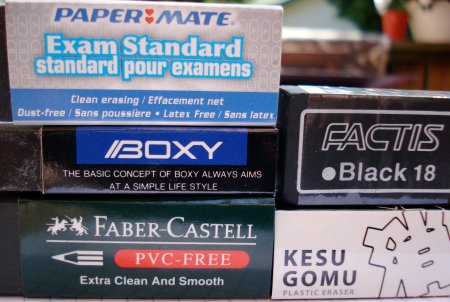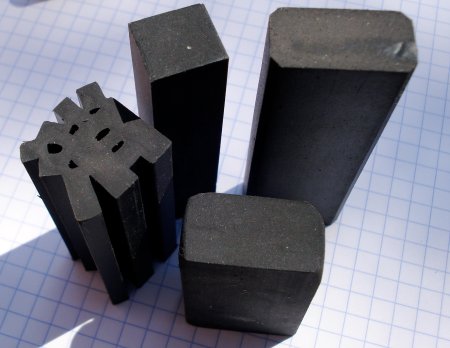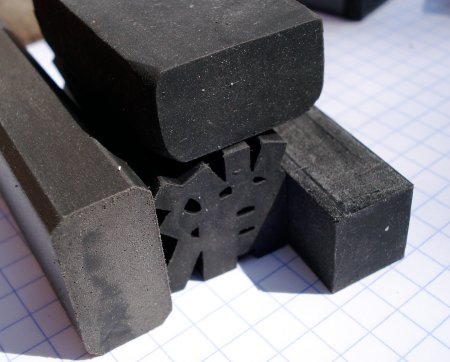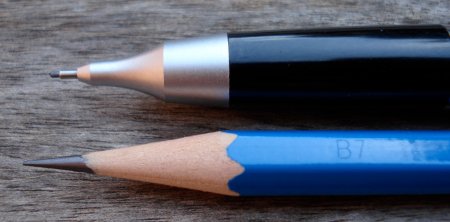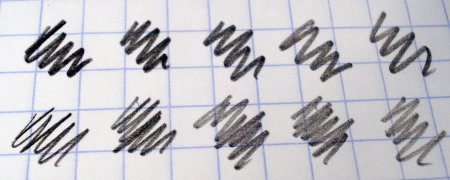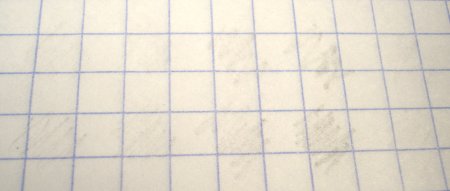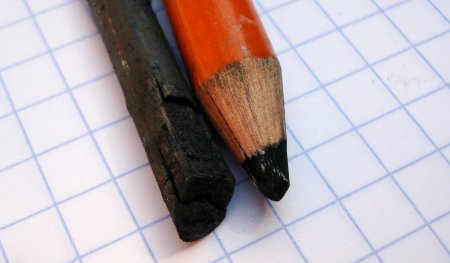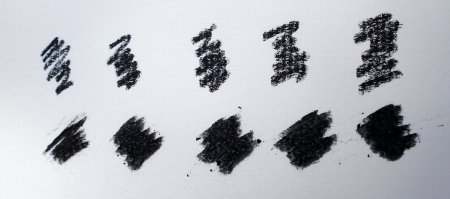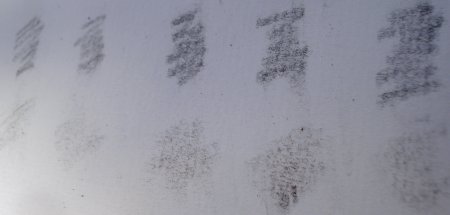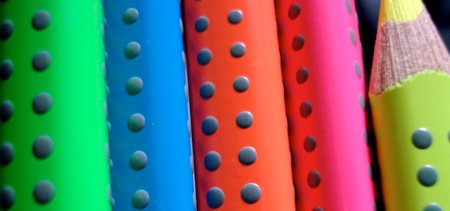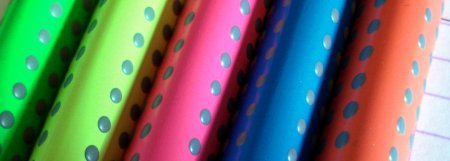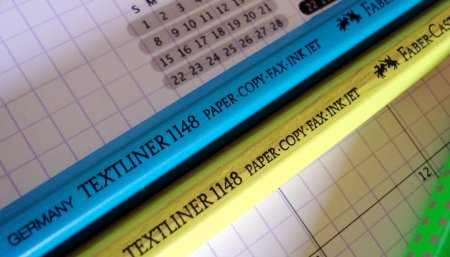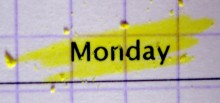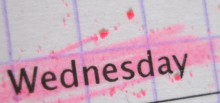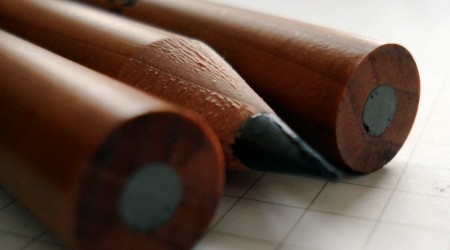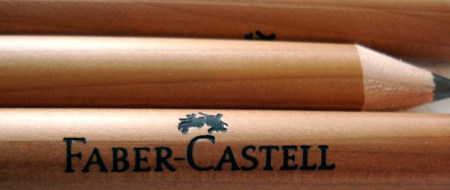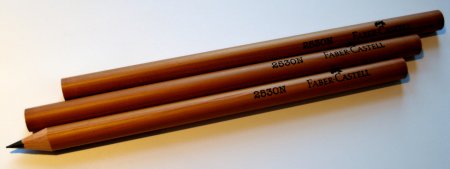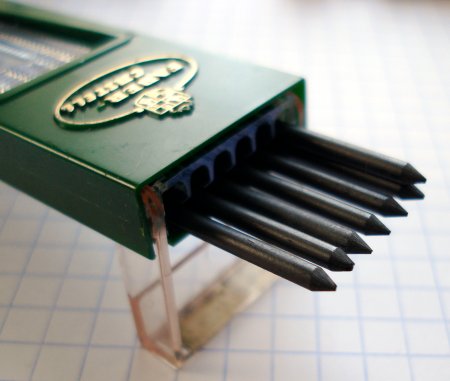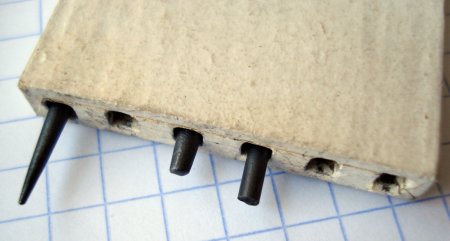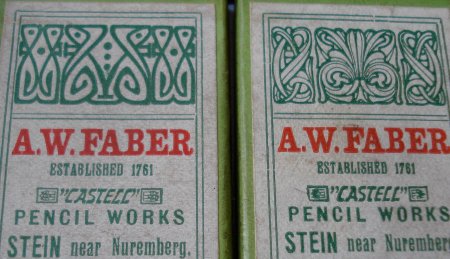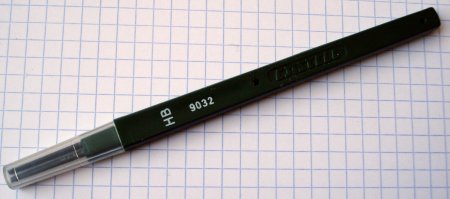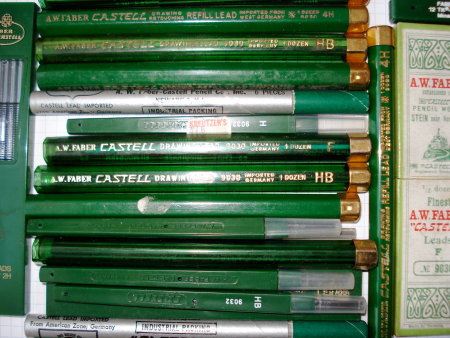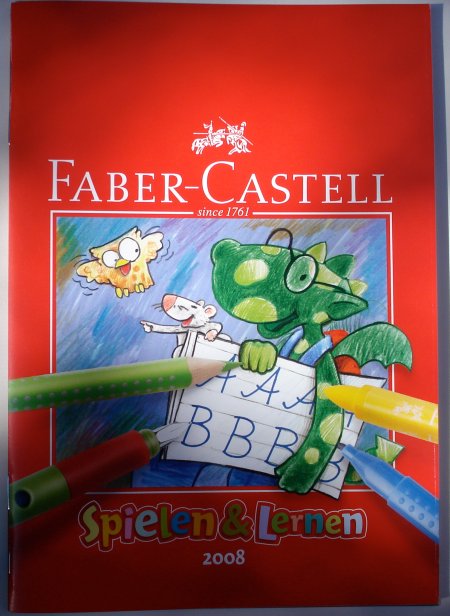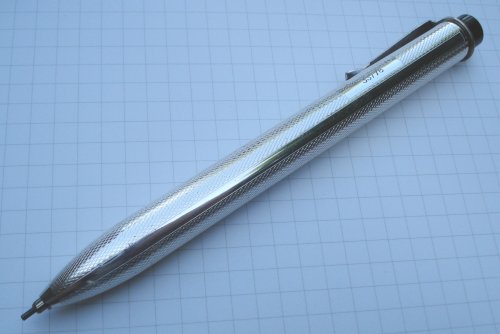
Sorry for recent website outages – some rough weather was playing havoc with local power on the weekend.
Today, let’s reach way back in the pencil cupboard and pull out a vintage multipencil. This particular one has four colours. Thanks to leadholder.com’s archives, I can see that this pencil appeared on page 47 of Faber-Castell’s 1957 catalogue. Silver-plated, it originally sold for 11.50 DM. A sterling version was 18 DM.

Thank goodness this pencil came with a manual!
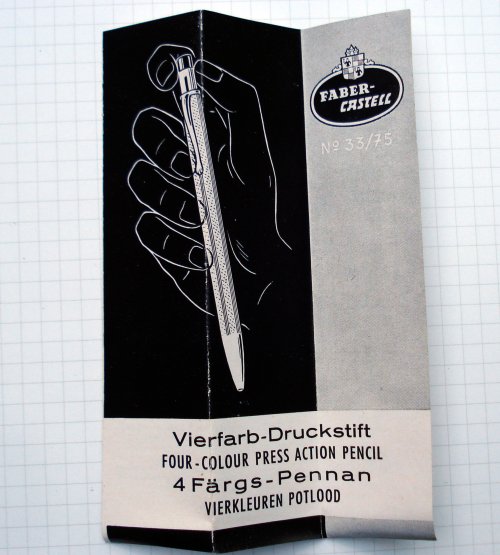
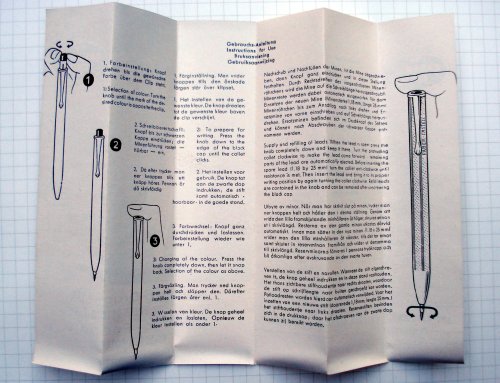
The first thing I learned is that the cap can be depressed/released to reveal bands indicating the colour of choice. Twist the cap to align the color band with the clip, and the colour is changed.
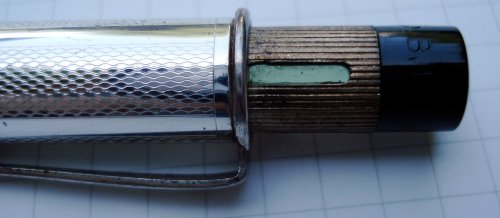
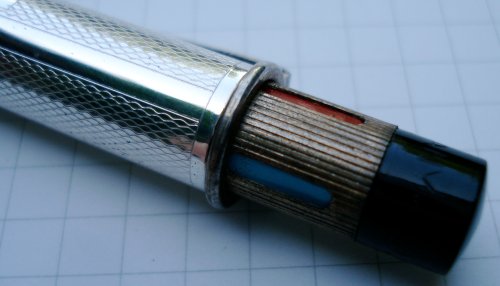
I was pleasantly surprised that these perhaps fifty year old leads write so richly.

The manual revealed another surprise: There is a spare lead set under the cap.
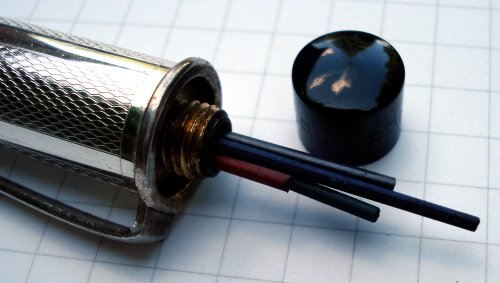
So how do you advance the lead? Here’s where modern pencils show an advantage – you have to extend the mechanism with one hand, and grasp the lead clutch with the other – and twist the clutch clockwise to extend the lead. I kept looking at the manual and the pencil and saying to myself, “this can’t be right”, but, it worked and that’s how the lead is ejected:
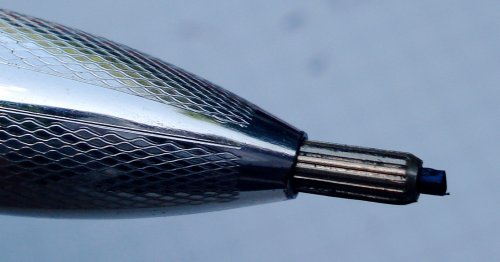
How would you replace a lead? Essentially, by performing the reverse of the lead advance, screwing in the replacement lead with counter-clockwise twisting. I haven’t done this, and good grief, don’t look forward to trying it. Colour leads are typically brittle, and I suspect that this would be very challenging.
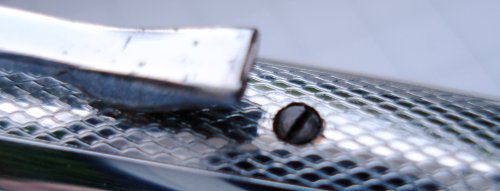
One other interesting aspect – this pencil uses indelible (copying) lead that contains aniline dye, so the required manual manipulation of the lead is definitely undesirable from a safety perspective.
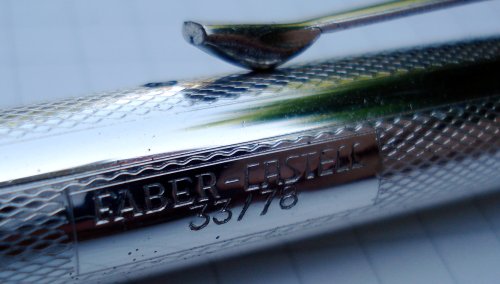
While it has many charms, for me, the operation is too problematic for this to become a daily use pencil.

